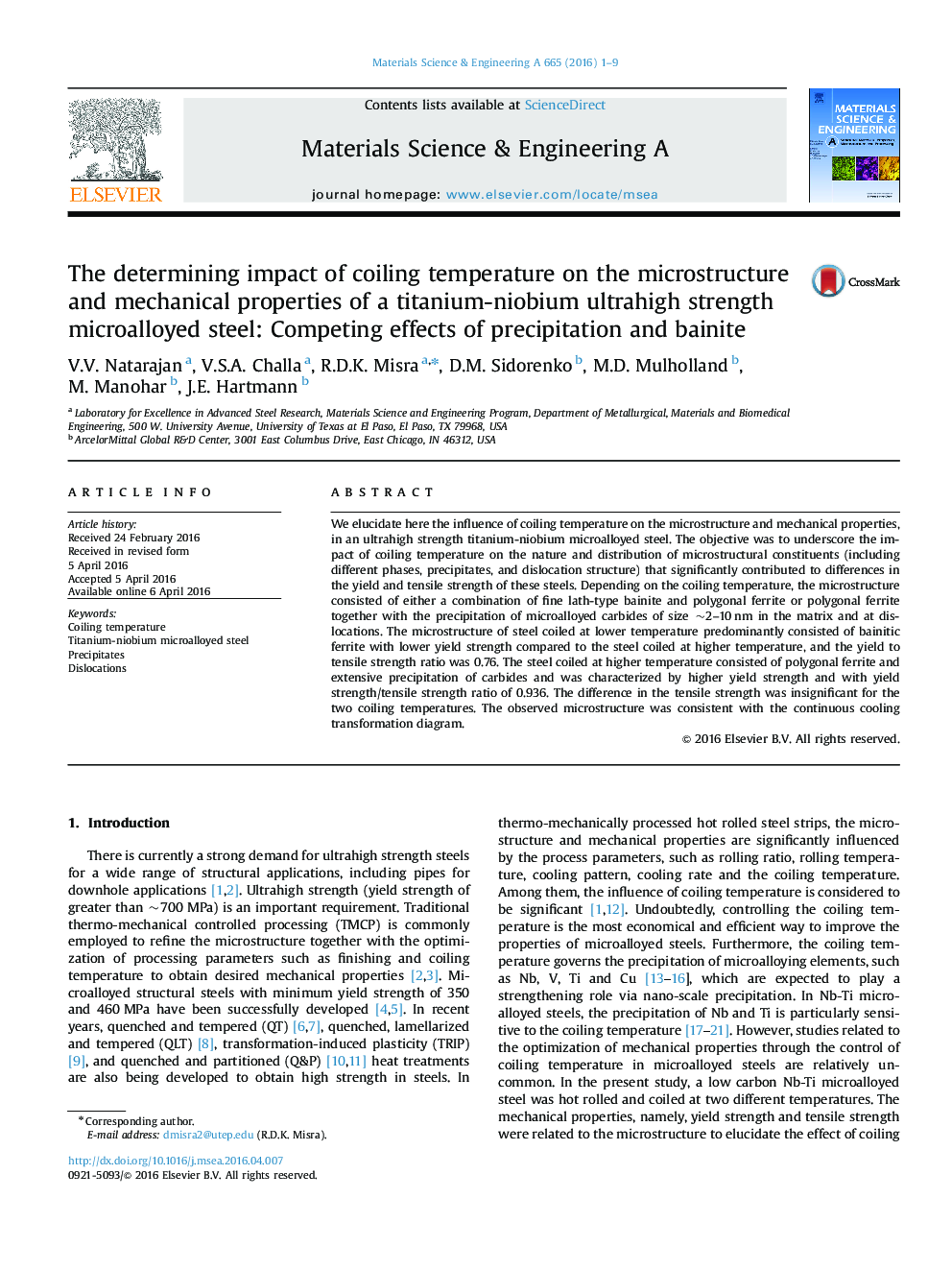| Article ID | Journal | Published Year | Pages | File Type |
|---|---|---|---|---|
| 1573221 | Materials Science and Engineering: A | 2016 | 9 Pages |
Abstract
We elucidate here the influence of coiling temperature on the microstructure and mechanical properties, in an ultrahigh strength titanium-niobium microalloyed steel. The objective was to underscore the impact of coiling temperature on the nature and distribution of microstructural constituents (including different phases, precipitates, and dislocation structure) that significantly contributed to differences in the yield and tensile strength of these steels. Depending on the coiling temperature, the microstructure consisted of either a combination of fine lath-type bainite and polygonal ferrite or polygonal ferrite together with the precipitation of microalloyed carbides of size ~2-10Â nm in the matrix and at dislocations. The microstructure of steel coiled at lower temperature predominantly consisted of bainitic ferrite with lower yield strength compared to the steel coiled at higher temperature, and the yield to tensile strength ratio was 0.76. The steel coiled at higher temperature consisted of polygonal ferrite and extensive precipitation of carbides and was characterized by higher yield strength and with yield strength/tensile strength ratio of 0.936. The difference in the tensile strength was insignificant for the two coiling temperatures. The observed microstructure was consistent with the continuous cooling transformation diagram.
Related Topics
Physical Sciences and Engineering
Materials Science
Materials Science (General)
Authors
V.V. Natarajan, V.S.A. Challa, R.D.K. Misra, D.M. Sidorenko, M.D. Mulholland, M. Manohar, J.E. Hartmann,
